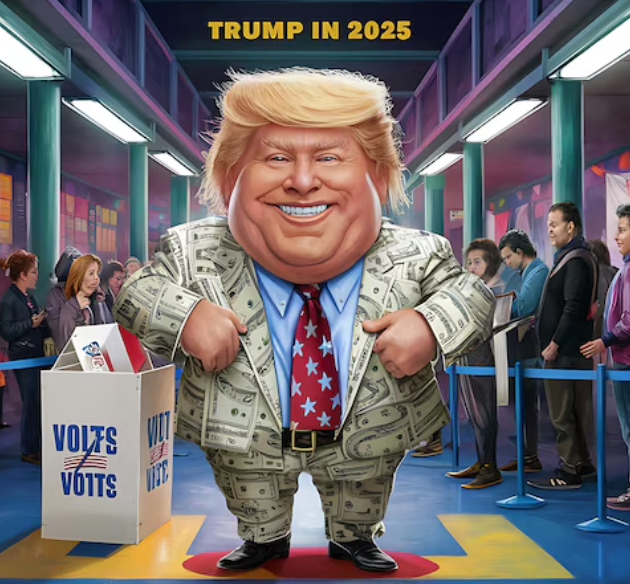$AAPL $TSLA $BTC
#TrumpTariffs #Protectionism #TradePolicies #GlobalEconomy #USChinaTrade #Tariffs #StockMarketImpact #FiscalPolicy #ManufacturingJobs #SupplyChain #TradeDeficit #TariffDebate
Would Trump’s implementation of tariffs really be as detrimental as some claim, especially for the United States’ economy? Economist Kimberly Clausing provides a perspective that opens a robust debate about protectionism, which aims to shield domestic industries from overseas competition. However, protectionist policies—like tariffs—often come with unintended ripple effects on the global economy and even the domestic market they seek to protect. For instance, while the intention behind tariffs may appear to encourage local production, they can increase costs for both consumers and corporations that rely on imports of raw materials and components. Companies such as Apple ($AAPL) and Tesla ($TSLA), for example, depend heavily on global supply chains. If tariffs restrict the flow of goods or increase the price of critical inputs, this will raise their costs of production, potentially shrinking margins or increasing consumer prices, thus dragging down stock performance in the short-to-medium term.
Another crucial factor to consider in analyzing tariffs is the effect on international trade relations, specifically those between the United States and China. Much of the modern economy is intertwined with Chinese manufacturing; everything from electronics to textiles relies on Chinese-made goods or materials. Consequently, increasing tariffs signals a more protectionist economic stance that can lead to a tit-for-tat trade war. With China retaliating with tariffs of its own or implementing measures like currency devaluation, US firms might lose their competitive edge in international markets. This could depress exports, harming US manufacturing and weakening the broader economy. Additionally, U.S. firms operating in China may face higher barriers or operational difficulties if China chooses to complicate foreign direct investment (FDI) measures. The uncertainty in trade relations could also introduce volatility into equities markets, particularly in sectors that rely heavily on international trade, from technology to automotive and even retail.
Protectionist policies have historically been pursued with the goal of revitalizing domestic industries and creating jobs. In theory, tariffs encourage consumers and businesses to buy American by making foreign goods more expensive. However, the reality of global trade interdependence makes it challenging to isolate the intended benefits from the downsides. Consider the U.S. steel and aluminum tariffs imposed in 2018 under Trump’s administration. While they aimed to drive American industrial jobs, downstream industries that depended on cheaper imported metals faced increased costs and lower profits. Over time, this created a net negative impact as companies either passed higher costs onto consumers or cut back on hiring and investments due to squeezed profit margins. Tesla ($TSLA), for instance, which utilizes significant amounts of aluminum in its car production, was directly affected. Despite the push for protectionism, the U.S. industrial and manufacturing sector struggled with pinched supply chains and inflated expenses.
In the bigger picture, tariffs also weigh on broader economic indicators. A prolonged trade war or instated protectionism could shrink GDP, as consumers and firms react to heightened uncertainty and reduced access to cheaper imports. Cryptocurrency assets like Bitcoin ($BTC), which some argue benefit from fiat-instability and exposure to cross-border uncertainty, could experience demand spikes as investors hedge against risks in traditional fiat-driven economies. However, traditional equity markets, especially those reliant on global supply chains, would see heightened volatility with frequent market corrections. Furthermore, with rising costs from tariffs, valuation multiples or corporate earnings in sectors affected by protectionism could be revised lower, leading to underperformance in the stock market. Therefore, Trump’s tariff-centered economic stance, while aiming for protectionism, has the potential to bring about broader repercussions that lead to both domestic and international volatility in the marketplace.











Comments are closed.